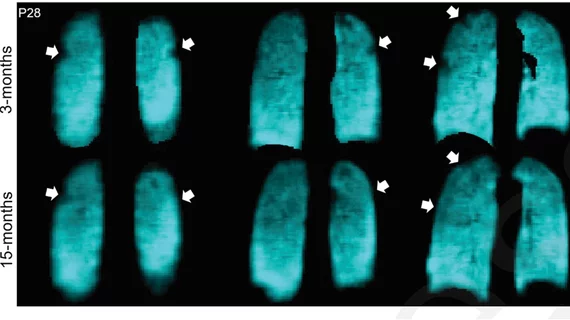New imaging data offers 'positive' news for COVID long haulers
New imaging data indicates that the effects of long COVID may begin to dwindle over time, offering hope for those suffering from the long-term ramifications of the virus.
Experts recently found that pulmonary function, gas-exchange, exercise capacity, quality-of-life and 129Xe MRI ventilation defect percent (VDP) all improved for patients with post-acute COVID syndrome (PACS) 15 months following their initial diagnosis.
These findings were published Feb. 7 in Radiology.
In the new paper, experts discuss the long-term effects of PACS, noting that although most patients do tend to show great improvement 12 months after their initial COVID infection, many patients continue to carry at least one persistent symptom. 129Xe MRI exams on a portion of these patients three months after acquiring COVID have shown abnormal gas-exchange measurements and ventilation defects, despite the patients maintaining normal pulmonary function. In turn, this impacts their quality of life and ability to exercise.
Authors of the new paper sought to understand how/whether these effects change in the long-term. To do this, they conducted a number of exams relative to respiratory health and pulmonary function, including 129Xe MRI, spirometry, six-minute walk distance (6MWD) and St. George's Respiratory Questionnaire (SGRQ) on 53 participants with PACS. These exams were conducted during 3- and 15-month follow-ups.
All of these measures had improved by the participants' 15-month follow-up. Severity of ventilation defect percent correlated with improved 6MWD at 15 months and respiratory medication administered at the 3-month mark was associated with better quality of life scores at 15 months.
“Not only were these improvements statistically significant, but the majority of participants also showed a personal improvement greater than the minimal clinically important difference,” corresponding author Grace Parraga, with the Department of Medical Imaging at Western University in Canada, and colleagues noted.
The authors described their results as “positive,” suggesting that they could offer new insight into treating patients with PACS.
The study abstract is available here.

